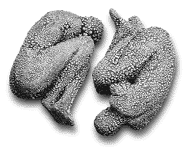The Birth of Women's Studies
"Women's studies goes beyond adding women into existing categories," wrote Missoula activist Judy Smith during an effort to introduce a women's studies major at The University of Montana. "It asks what new categories must be created to understand women's experience." Today, eight years after its creation, UM's Women's Studies Program provides students and community members with a variety of ways to learn about women around the globe. Now the president of Women's Opportunity and Resource Development, Smith established the UM Women's Resource Center with Diane Sands in 1969 (see story). Smith says the center was a springboard for women's studies, offering courses on feminism and women's health issues and-with assistance from Margaret Kingsland, then director of the Montana Committee for the Humanities-sponsoring conferences on topics such as women and technology and women and religion. The creation of the Women's Studies Program, Smith emphasizes, was a group effort. In 1975 she and Sands joined with philosophy Professor Maxine Van de Wetering to propose such a program to the Faculty Senate. It was approved but not funded. The trio's efforts, however, were not in vain. Faculty started including material on women and minorities in UM's new general education curricula. Student demand, faculty interest and funding finally coalesced in 1991. A second group of faculty, spearheaded by Van de Wetering, saw a new proposal through the Faculty Senate and on to approval by the state Board of Regents. UM's Women's Studies Program was born. "We were blessed with faculty who had tremendous organizing skills," says Van de Wetering, "[who] were all pushing hard for formal acknowledgement of the discipline. This was important because without it classes would remain at the level of special topics and experimental courses and could always be dropped." Today's interdisciplinary program offers courses on topics ranging from ecofeminism to Latin American women and involves faculty members throughout campus. Undergraduate students may earn an option in women's studies within the "wonderful and well-developed umbrella" of a liberal studies major, says G. G. Weix, women's studies director and associate professor of anthropology. Freshmen and sophomores take introductory courses in fine arts, humanities and social sciences. Juniors and seniors take courses devoting at least three weeks out of the semester to gender issues-such as the sociology of the family-or focusing entirely on women, such as courses on feminist ethics. "The best thing," says Valerie Park, a fifth-year senior who switched from music to women's studies, "is that you are able to draw links through different disciplines through the study of women." Weix hopes that the new faculty affiliate position in Women's Studies will draw those links even closer. "This year Brackette Williams, an anthropologist and MacArthur Fellow who is working on a comparative study of capital punishment, has joined us," she says. "We'd like to draw national scholars who are interested in doing research in Montana. We hope the faculty affiliate will eventually become a Women's Studies Scholar-in-Residence." Students also can put their theoretical knowledge to practical use through internships sponsored by UM's Center for Work-Based Learning. Supervised by Weix, seventeen students spent part of their spring 1999 semester working at organizations such as Women's Opportunity and Resource Development and the YWCA's battered women's shelter. "We see the real-life versus the theoretical viewpoint," says Park, who interned at the Women's Center organizing campus events such as the International Young Women's Day of Action and Body Awareness Month. Bringing scholarship to a wider community has been another important part of the women's studies curriculum since the 1970s. "We always had community women coming to sit in on classes when we offered them," Van de Wetering says. "We wanted to find a way to include [these women] when they weren't able to enroll." A twice-monthly brown bag lunch series was created in 1991 to reach this audience. The series presents faculty research and community issues on topics ranging from the impact of welfare reform in Montana to dieting in adolescents. "Women's Studies opens up new fields of knowledge, inquiry and research," says Weix. "It broadens scholarship by making it possible for women to imagine themselves part of the academy."
Freelance writer Joyce Brusin recently published an essay in Manoa. Missoula artist Adrian Arleo sculpted "Bedside Study II, Ocean Floor" in 1999. |
